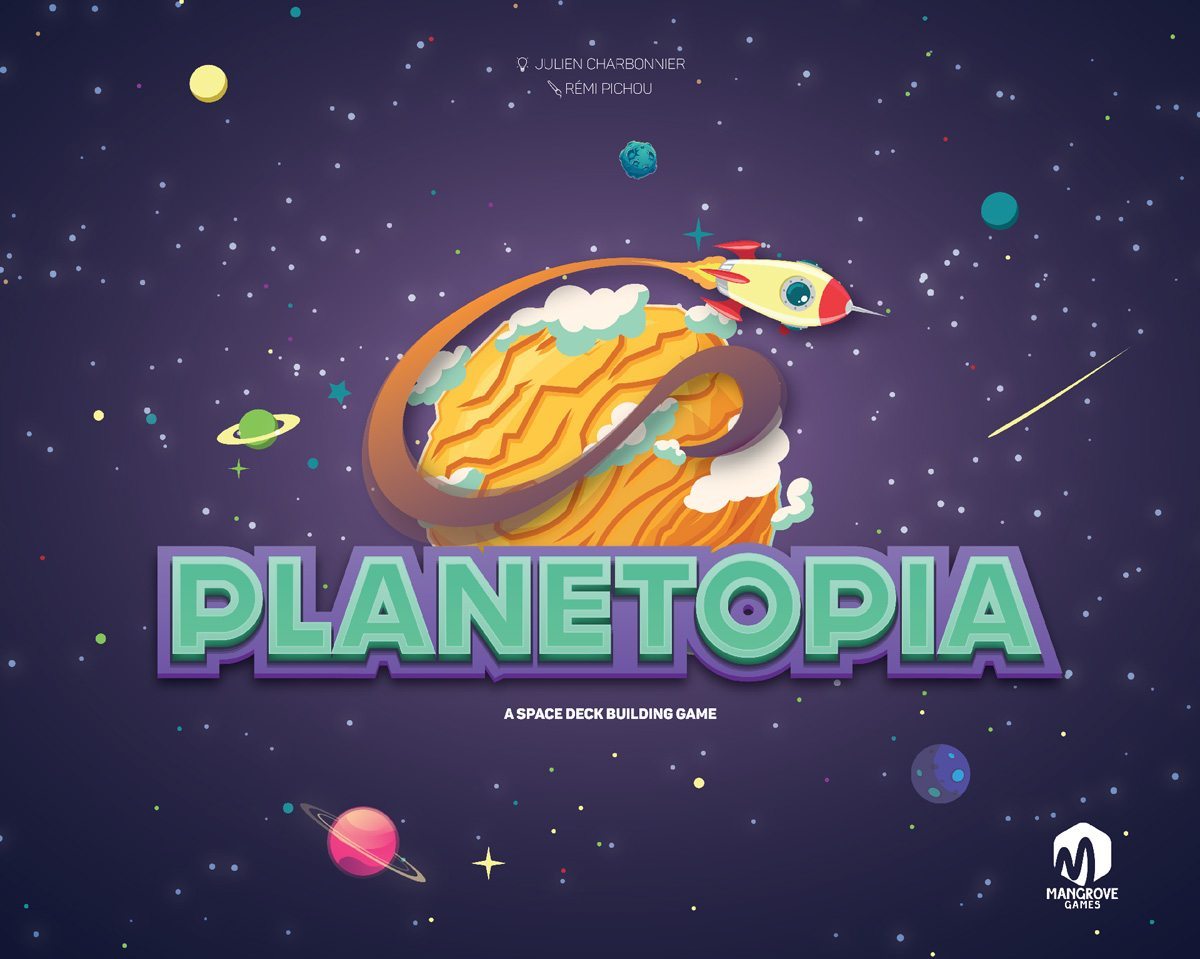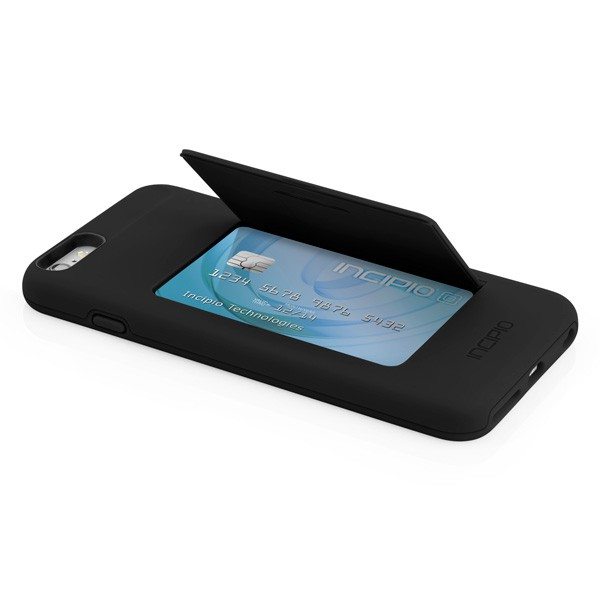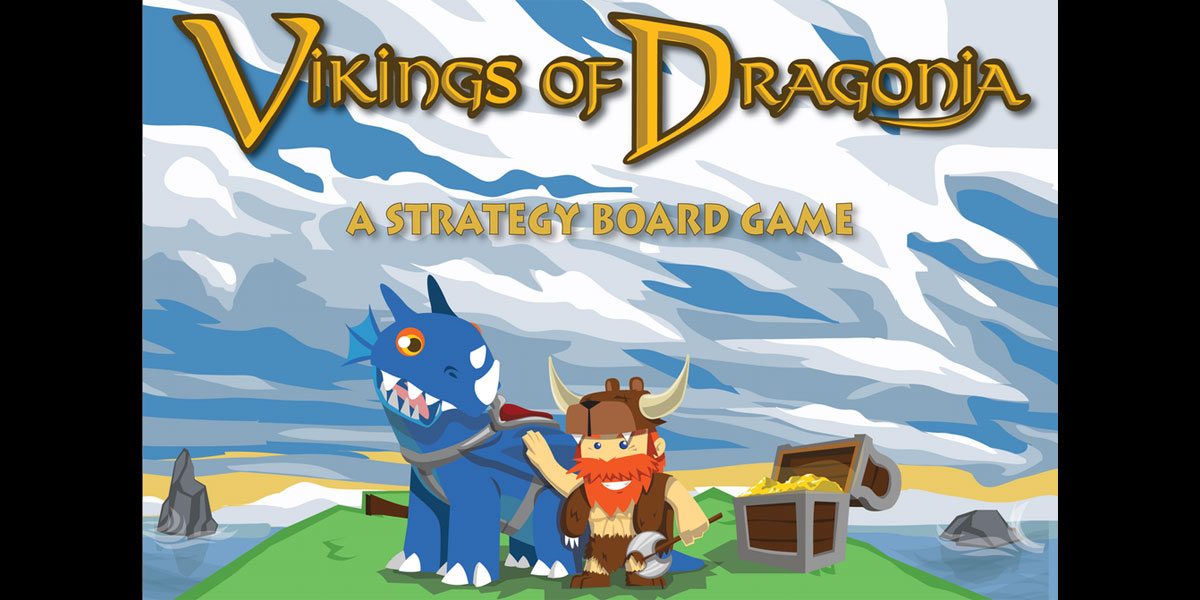Build the most prestigious planet by arranging aliens into their favorite patterns—who will make the best Planetopia?
What Is Planetopia?
Planetopia is a deck-building, pattern-making game for 2 to 5 players, ages 8 and up, and takes about 30–45 minutes to play. It’s currently seeking funding on Kickstarter, with a pledge level of €26 (about $32 USD) for a copy of the game. The game is fairly easy to learn and is thematically appropriate for any age (though you might want to come up with some explanation for the idea of “atomizing” aliens…).
New to Kickstarter? Check out our crowdfunding primer, and visit our Kickstarter curated page for more projects we love.

Planetopia Components
Note: My review is based on a prototype copy, so it is subject to change and may not reflect final component quality. Stretch goals may also affect the final component list.
- 5 Planet boards
- 28 Prestige cards
- 60 Cosmos cards
- 40 Atom tokens
- 80 Alien tokens (16 each of 5 types)
- 24 Special tokens (extra move, double atoms, and wild alien)
The Kickstarter version will also come with a main board that won’t be included in the retail edition—it’s not entirely necessary, but holds the two rows of cards in the center of the table.

The illustrations on the cards and boards are colorful and cute, evoking the feel of a kid-friendly mobile game. There are five different types of alien, all cheerful and goofy-looking. The planet boards show a simple 3 x 3 grid of circles in the center, 3 spaces at the bottom for special tokens, and turn summary icons across the top. The background illustrations are unique, though: each player’s planet has a different look to it, which is fun even if it doesn’t have any game effect.

The cosmos cards are pretty simple and don’t contain a lot of information. The cards that let you add aliens to your planet have illustrations of rockets and heavenly bodies, but really the only relevant information is the number and color of aliens in the top corner.
Overall, the components look fun and inviting. The “swap aliens” cards are a little less exciting, but everything else looks pretty nice.
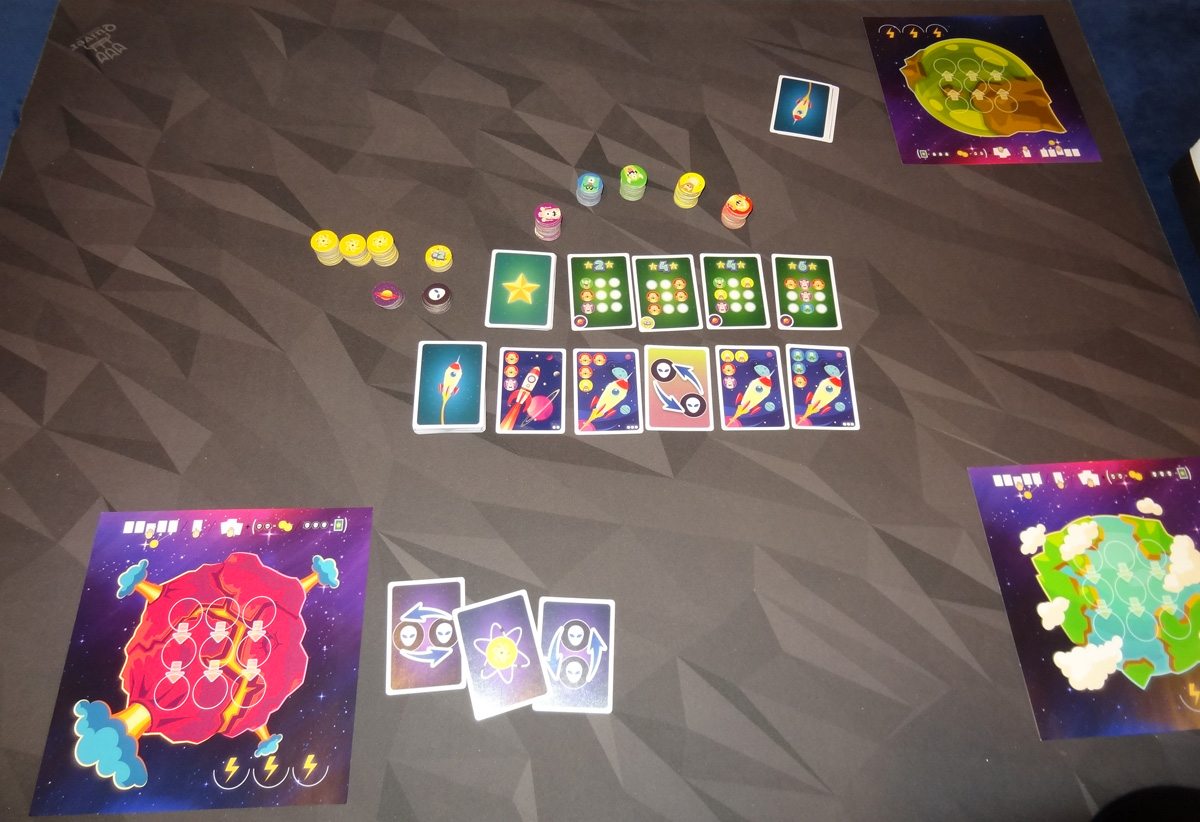
How to Play Planetopia
You can download a copy of the rulebook here.
The Goal
The goal of the game is to be the first to reach 25 prestige points.
Setup
Give each player a planet board, 2 atoms, and 3 starting cards, which form a starting hand.

Shuffle the cosmos cards and lay out five cards face-up in a row, with the deck to the left. Shuffle the prestige cards and lay out one more card than there are players, and set the deck nearby.
Note: when playing with fewer than 4 players, you’ll remove certain cards from the decks from the game.
Gameplay
On your turn, you must take a mandatory action, and you may also take an optional action; your two actions may be in either order. You must choose one mandatory action:
- Take a cosmos card.
- Play a cosmos card.
- Retrieve your cards.
You may choose one optional action:
- Atomize aliens.
- Claim a prestige card.
Here’s a closer look at those actions.
Take a cosmos card: You may take a card from the row of cosmos cards and put it into your hand. The right-most card is free to take, but if you want to take any other card, you must pay atoms onto each card to its right. When you claim a card, you take all of the atoms that are on it. After taking a card, slide cards to the right to fill open spaces, and then place a new card from the deck face-up at the left end of the row.

Play a cosmos card: You play one of your cards from your hand and take its effect. All of your played cards go into your own played pile, which you may look through at any time. If you play your last card from your hand, you automatically pick up all of your cards back into your hand.
Cards that show alien icons let you place aliens onto your planet board. Take those aliens from the supply and place them into available spaces in the 3 x 3 grid. The arrows on your planet board indicate gravity: aliens will always drop down toward the bottom whenever there is space below them.

There are also cards that let you swap aliens (horizontally, vertically, or diagonally), or use a raygun to transform one alien into another one (at the cost of 2 atoms). Finally, one of your starting cards lets you take one atom from the supply.
Retrieve your cards: Pick up all of your played cards and put them back into your hand.
Atomize aliens: You may discard one or two aliens from your planet back into the supply, taking 1 atom for each alien discarded. Be sure to slide aliens down into empty spaces as required by gravity.

Claim a prestige card: If you have aliens on your planet matching the pattern shown on a prestige card, you may claim the prestige card, setting it into a score pile next to your board. Discard those aliens from your board back into the supply, sliding down any remaining aliens as needed.
Each prestige card has a point value, and also shows a special icon in the lower left corner. When you claim a prestige card, you take the matching token and place it on your planet board at the bottom (if there is room).
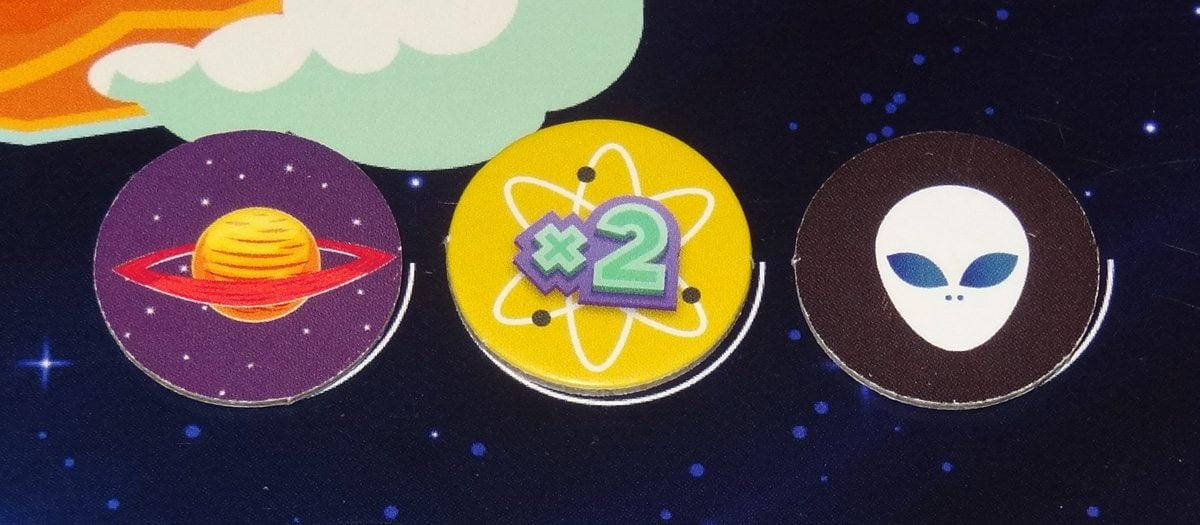
The special tokens may be spent on future turns and don’t count as a turn to use them:
- Planet: Take an extra turn.
- x2: When you atomize aliens, take twice as many atoms.
- Alien: Place it on an empty space on your planet (following gravity); it matches any alien for earning prestige cards.
Game End
The game end is triggered as soon as any player reaches at least 25 prestige points. Continue the round until all players have had the same number of turns. The highest score wins. Ties are broken by the most atoms, and then by the most aliens remaining on a planet.
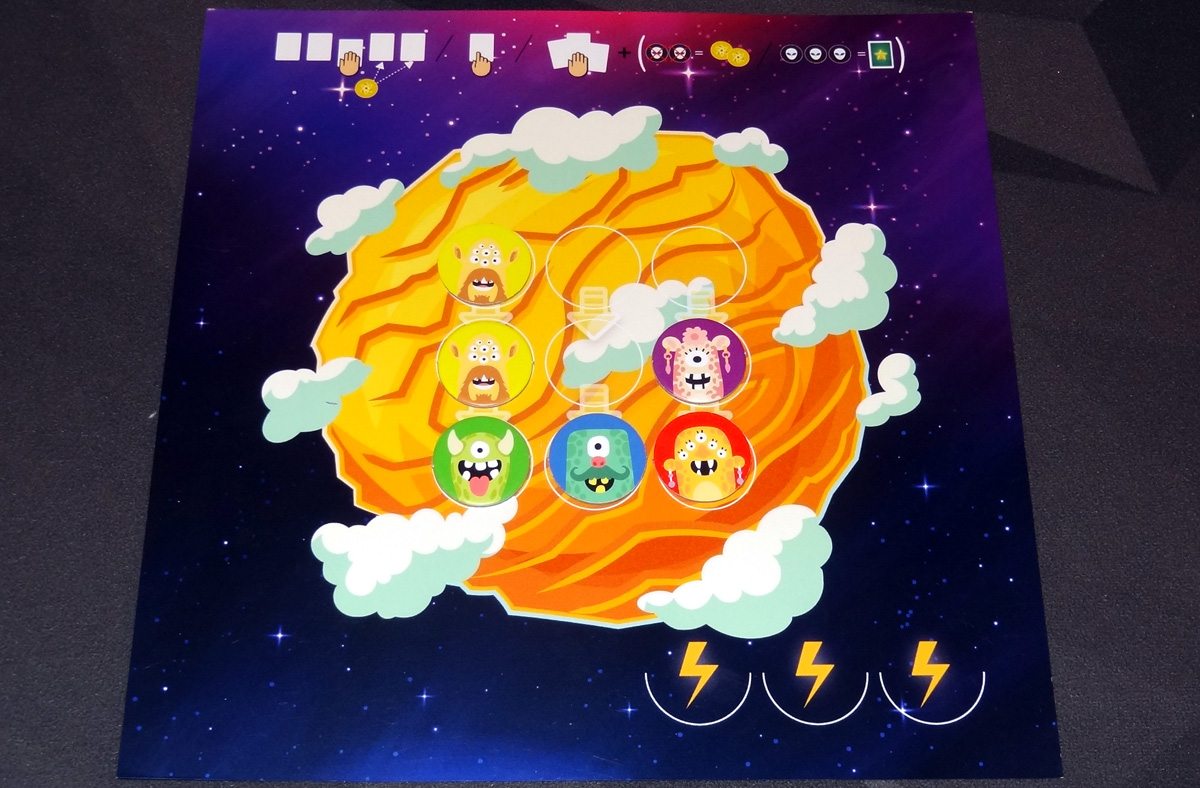
Why You Should Play Planetopia
Planetopia feels a little bit like one of those match-3 video games, mostly because of the shifting patterns of aliens and the way they drop down when “cleared.” It’s a cute, puzzle-y game that will scratch the itch of gamers who love pattern-matching and a little bit of spatial manipulation.
The deck-building portion isn’t quite like regular deck-building games because you don’t have the usual deck, hand, discard system from games like Dominion. Instead, you have no limit to your hand size, and your cards are either in your hand (available to be played) or in your own discard pile. As you gain new cards, they go straight to your hand—but at some point, you have to decide whether to spend a precious action to pick up all of your played cards.
This presents some nice decisions for the players. For instance, you may have a card that would let you build a pattern if you can play it twice—but that means taking at least 3 turns to play it, pick it up, and then play it again. The more often you take the “pick up cards” action, the less efficient you are. It seems better to build up a large collection of cards, and then be able to play through a lot of them before you have to pick up again—but while you’re building up, other players may be edging ahead and claiming prestige cards.

I also like the way that the cost of the action cards is set up: every card costs you one action to take, but only the last one is free. Sometimes you have to balance whether it’s worth spending a little more time to get to the card that you want (and risk somebody else taking it before you), or whether it’s worth spending your atoms to claim a card that was just revealed. And as a card is passed over again and again, it becomes more and more valuable because of the atoms on it—eventually, it may be worth taking just for the extra atoms. This mechanic has been seen in many games, like Small World for instance, and I think it works well to set prices on cards due to a natural economy.
Since the planets are all visible for everyone to see, you can kind of see which prestige cards people are trying to build up to, at least to some extent. Multiple players may be trying to go for the same card, but whoever completes the pattern first (and has their optional action available) is the one who will take it. If you see somebody building one of the larger patterns, you have to decide whether you can outpace them—what cards do they still have in their hand, and how many turns will it take them to finish it off?

The special tokens that you earn from prestige cards can be really powerful. The atom doubler is more useful earlier in the game, when you’re still building up your deck and may want to buy more expensive cards, but once you have a strong deck of cards you may not need it as much. The wild alien is great for filling out a pattern or filling in a space when you need an alien on the top two rows. My favorite, though, is the extra turn, because being able to play two cards in the same turn can let you race ahead and grab a prestige card that somebody else was working on. When you start looking at prestige cards to build up your patterns, it’s important to look not just at the point value, but also the special token you’ll earn for it.
One thing we encountered, though, is that if you’re seated around a table, half of the players may be looking at the prestige cards upside down. Depending on their ability to turn it upside down in their head, this can make things more difficult for those players. I would suggest making more experienced players view the cards upside down.
Overall, Planetopia is a clever, fairly quick game. Manipulating the aliens on your board feels a little like playing a video game, with the added stress of racing your opponents to make matches for the valuable combos. The hand management is simple but effective, and the illustration style is a lot of fun. It’s one I would recommend for those who like spatial puzzles, but not for those who find those frustrating.
For more information or to make a pledge, visit the Kickstarter page!
Click here to see all our tabletop game reviews.
If you’d like to stay up-to-date with all of our tabletop gaming coverage, please copy this link and add it to your RSS reader.
Disclosure: GeekDad received a copy of this game for review purposes.

